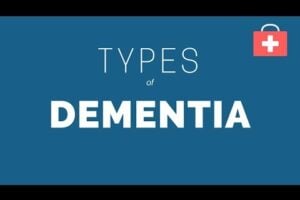DIAGNOSIS VIDEO + ARTICLE:
Subcortical small-vessel disease (SVD), one of the main causes of vascular dementia, has itself become an increasingly common dementia diagnosis. Learn more.
In recent years, subcortical small-vessel disease has become an increasingly common cognitive diagnosis. Researchers at University of Gothenburg have now shown it is possible to identify patients with the disease by combining two biomarkers that are measured in spinal fluid and blood, increasing the potential for both treatment and development of medication.
Subcortical small-vessel disease is one of the most common cognitive diseases, along with Alzheimer’s disease and mixed dementia, which is a form in which Alzheimer’s disease occurs together with vascular damage in the brain.
Researchers find biomarkers for diagnosis
Petronella Kettunen, associate professor in neurobiology at the University of Gothenburg and project manager for the Gothenburg Mild Cognitive Impairment study, is the article’s lead author.
“Up to now, we have had no markers for subcortical small-vessel disease, which means that the disease could not be easily identified by testing samples of spinal fluid or blood,” Kettunen says.
“We have now opened up an opportunity to identify the disease, enabling help for this patient group in the form of lifestyle changes and blood pressure-reducing medication,” she adds.
In the study, researchers at the University of Gothenburg examined several biomarkers, measured in samples of both spinal fluid and blood, to see whether they could be used to distinguish between these three common cognitive diseases. A total of 170 patients are included in the study, including control subjects.
Identifies subcortical small-vessel disease
The study confirms that a biomarker for vascular injury, based on the ratio of the protein albumin in spinal fluid and blood, was significantly higher in patients with subcortical small-vessel disease.
The study also presents a new biomarker, a fragment of the amyloid precursor protein (APP) in spinal fluid, which was lower in patients with subcortical small-vessel disease.
“When we combined the biomarker for vascular injury with the protein fragment we identified, the potential for separating patients with subcortical small-vessel disease from control subjects, patients with Alzheimer’s disease and patients with mixed dementia was improved,” says Kettunen.
Well-defined research basis
The findings also improve the possibilities for refining patient cohorts during clinical trials for new drugs.
Diagnosing patients with these diseases is important for identifying the correct patient groups for each disease that in turn enable future treatment studies.
“For a treatment study for Alzheimer’s disease, for example, you need to know that all of the patients are suffering from Alzheimer’s and not from another cognitive disease, otherwise the result will not be accurate.”
Alzheimer’s & Subcortical SVD
- Alzheimer’s disease progresses gradually. Early in its development, the disease usually causes memory loss because the brain regions responsible for this function are broken down.
- In contrast, subcortical small-vascular disease affects vessels deep within the brain, below the cerebral cortex, so that the cognitive symptoms are different. Patients often suffer sudden personality changes and slowed mental acuity before memory becomes noticeably diminished.
- Small-vessel disease can be associated with high blood pressure, and patients often exhibit small cerebral infarcts and other vascular injury in white brain matter. Patients with subcortical small-vessel disease constitute a large proportion of cases in the vascular cognitive disease group.
SOURCE:
REFERENCE:
- Petronella Kettunen, Maria Bjerke, Carl Eckerström, Michael Jonsson, Henrik Zetterberg, Kaj Blennow, Johan Svensson, Anders Wallin. Blood‐brain barrier dysfunction and reduced cerebrospinal fluid levels of soluble amyloid precursor protein‐β in patients with subcortical small‐vessel disease. Alzheimer’s & Dementia: Diagnosis, Assessment & Disease Monitoring, 2022; 14 (1) DOI: 10.1002/dad2.12296











